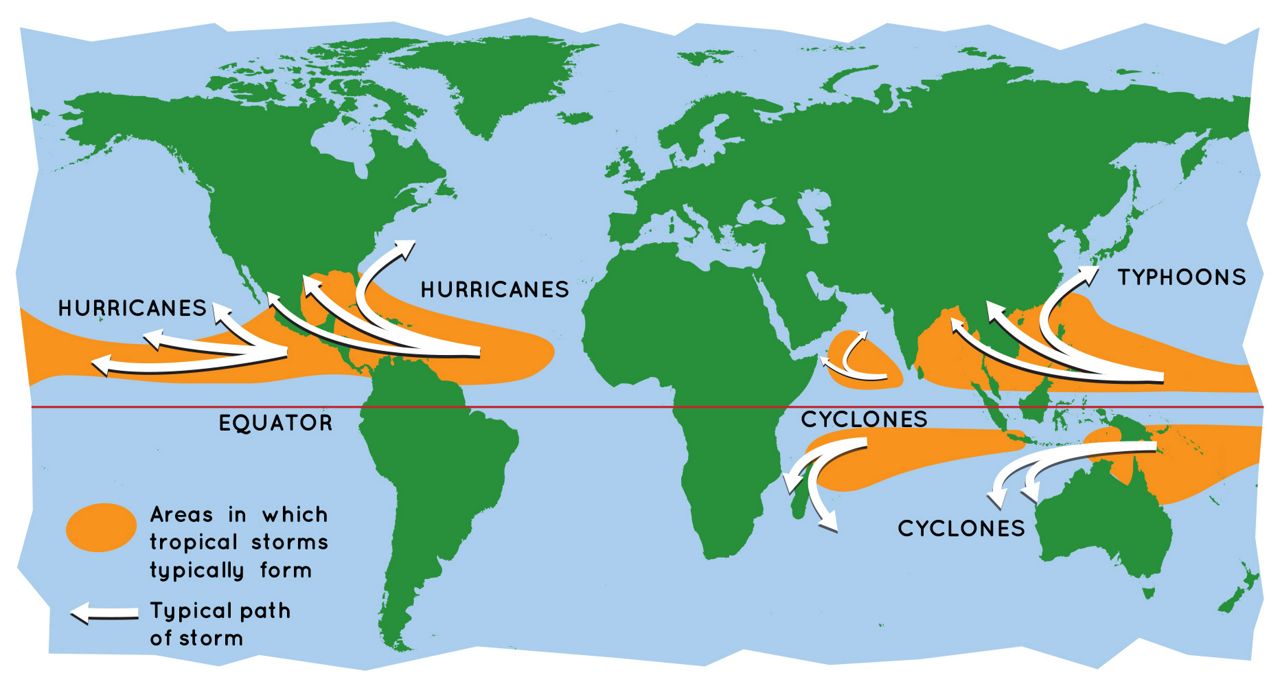You probably know what a hurricane is, but what about a typhoon? Or a cyclone? Basically, if you know what hurricanes are, you know what typhoons and cyclones are as well, since they’re all the same.
Hurricanes, typhoons and cyclones are all tropical cyclones. Tropical cyclone is a generic term for the weather phenomena, and what it’s called is called is a byproduct of where it forms.
All tropical cyclones need the same conditions to develop: warm water, a humid air mass and light upper-level winds. If conditions are right and a disturbance forms, a tropical cyclone is born.
The map below shows the different basins where tropical cyclones form, and what they’re called in each part of the world.
Hurricanes, typhoons and cyclones: Where they form and the directions they move around the world. (NASA)
Upper-level winds steer tropical cyclones. In the tropics, they’re influenced by trade winds, which are the prevailing winds in the region. That’s why storms typically move from east to west.
Because of the way the earth rotates and the Coriolis Effect, storms curve to the right in the Northern Hemisphere, and to the left in the Southern Hemisphere.
When are they different?
Just because hurricanes, typhoons and cyclones are tropical cyclones, it doesn’t mean they’re all exactly the same. Every storm is different.
Tropical cyclones rotate counter-clockwise in the Northern Hemisphere. In the Southern Hemisphere, they rotate clockwise.
The basins don’t all have specific seasons, but there are times of the year when activity is most favorable.
Hurricane, typhoon and cyclone activity is most favorable when sea surface temperatures are warmest and upper level winds are weakest. In the Southern Hemisphere, it’s during their summer.
We rank tropical cyclones on different intensity scales depending on which basin they’re in. All the intensity scales rank storms based on maximum sustained winds, like the Saffir-Simpson scale.
In each basin, the weakest storms are called tropical depressions, depressions or tropical disturbances.
The strongest storms? NOAA uses the Saffir-Simpson scale and calls them Category 5 hurricanes, which is a major hurricane. Australia and Fiji in the South Pacific also grade tropical cyclones on a scale of 1 to 5.
In the western Pacific, it’s a Violent or Super Typhoon. In the Indian Ocean, it’s a Super Cyclonic Storm or a Very Intense Tropical Cyclone.
Our team of meteorologists dive deep into the science of weather and break down timely weather data and information. To view more weather and climate stories, check out our weather blogs section.

